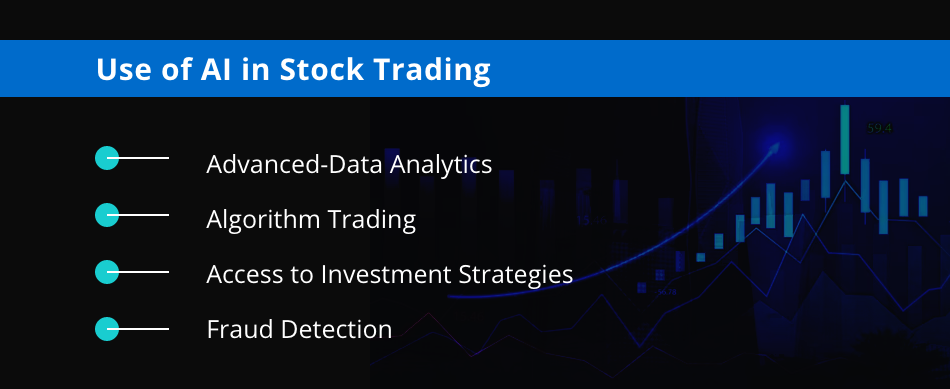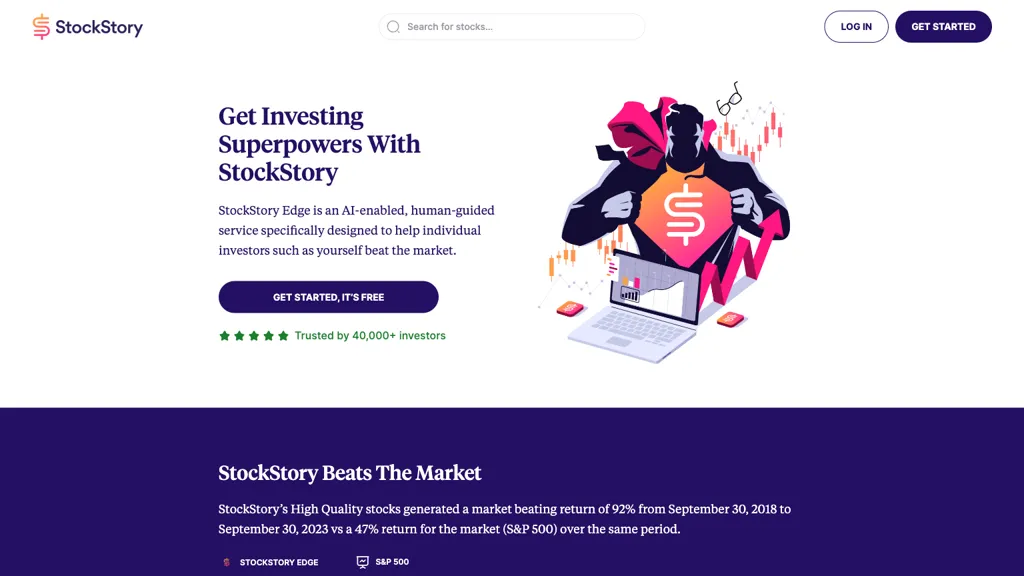To ensure reliable and accurate information, it is crucial to examine the accuracy of data sources and AI-driven trading platforms for stocks. Poor data can result in incorrect predictions, loss of money, and a lack of trust. Here are the top 10 guidelines to evaluate the quality of data and sources:
1. Verify the data sources
Check the source of the data. Verify that the platform uses reliable and well-known data providers, such as Bloomberg, Reuters or Morningstar.
Transparency: The platform must openly disclose the data sources it uses and keep them updated regularly.
Avoid dependency from a single source: Reliable platforms usually combine data from several sources to minimize the chance of errors and bias.
2. Check the Freshness of Data
Data that is delayed and real-time: Determine if a platform provides real time data or delayed. Real-time trading demands real-time data, whereas delayed data will suffice in long-term analysis.
Verify the frequency of updating data (e.g. hourly, minute by minute, daily).
The accuracy of data from the past Verify that the data is uniform and free of irregularities or gaps.
3. Evaluate Data Completeness
Search for missing data. Examine for any gaps in the historical data, missing tickers and incomplete financial statements.
Coverage: Make sure your platform has a wide selection of stocks, indices and markets that are relevant to your trading strategy.
Corporate actions: Make sure your platform can account for stock splits or dividends. Also, make sure it is able to account for mergers.
4. Test Data Accuracy
Data consistency can be guaranteed by comparing the data of the platform to other reliable sources.
Find mistakes: Look for asymmetry, inaccurate prices and financial metrics that don't match.
Backtesting using historical data for back-testing strategies used in trading to check if the results match expectations.
5. Granularity of data is determined
Level of detail You should get granular details like intraday volumes and prices, bid/ask spreads and the order book.
Financial metrics: See if the platform provides detailed financial statements (income statement, balance sheet, cash flow) and the most important ratios (P/E P/B, ROE, etc. ).
6. Make sure that Data Cleansing is checked and Preprocessing
Normalization of data. Make sure that the platform is normalizing data to ensure consistency (e.g. by adjusting splits, dividends).
Outlier handling: Examine the way in which the platform deals with outliers or irregularities in the data.
Missing Data Imputation: Verify if the platform utilizes reliable methods in order to fill in data points that are missing.
7. Examine the consistency of data
Aligning data to the correct time zone. To prevent discrepancies ensure that the data in all files is in sync with each other.
Format consistency: Make sure the data is presented consistently.
Cross-market consistency: Make sure whether data from different exchanges or markets is aligned.
8. Relevance of Data
Relevance for trading strategy - Make sure that the data corresponds to your style of trading (e.g. quantitative modeling, quantitative analysis, technical analysis).
Selecting Features: Check if the platform provides relevant features, such as economic indicators, sentiment analysis, and news data, which will improve the accuracy of predictions.
Check the integrity and security of your data
Data encryption - Make sure that your platform uses encryption to safeguard the data when it is transferred and stored.
Tamper-proofing : Ensure that the data hasn't been altered by the platform.
Compliance: Check to see whether the platform is in compliance with laws regarding data protection.
10. Transparency of the AI model's transparency on the Platform is verified
Explainability - Make sure that the platform gives you insights into the way in which the AI model uses the data in order to produce predictions.
Find out if the system has any bias detection features.
Performance metrics: Evaluate the platform's track record and performance metrics (e.g., accuracy and precision, recall) to determine the accuracy of its predictions.
Bonus Tips
User reviews and reputation Review the feedback of users and reviews in order to determine the reliability of the platform and data quality.
Trial time: You can test the data quality and capabilities of a platform with a demo or free trial before you decide to buy.
Support for customers: Ensure that the platform provides robust support for data-related problems.
By following these tips will help you evaluate the data quality and sources of AI software for stock prediction, ensuring you make informed and reliable trading decisions. Read the top rated best ai trading app info for more info including trading ai, ai chart analysis, AI stock, AI stock trading, ai investing, ai for trading, best AI stock trading bot free, ai investing app, investment ai, ai investment platform and more.

Top 10 Tips To Assess The Latency And Speed Of Ai Stock Trading Platforms
Speed and latency is a critical factor when looking at AI stock prediction/analyzing trading platforms. This is especially true for algorithmic traders, high-frequency traders, as well as active traders. A delay of just milliseconds can negatively impact profitability and trade execution. These are the top 10 guidelines for evaluating the latency and speed of these platforms.
1. Real-Time data feeds are a great way to evaluate the quality of your real-time data
Speed of data delivery Make sure your platform provides live data (e.g. sub-millisecond delay).
Data source proximity: To reduce the time it takes to transmit data, check whether your platform's servers can be found near exchanges that are major.
Data compression: Find out whether your platform uses effective data compression techniques in order to accelerate the speed of data transfer.
2. Check the trade execution speed
Order processing: The platform's ability to complete and process trades fast once an order has been submitted.
Direct Market Access: Verify that the platform provides DMA. DMA is a feature which allows you to transmit orders directly to exchanges without intermediaries.
Execution Reports: Check if your platform provides complete reports on the completion of orders, as well as timestamps.
3. Assess Platform Receptiveness
User interface (UI) Speed Check the platform's response time to your inputs.
Chart updates Verify whether charts and visualizations are updated in real-time update that is not lag.
Performance of mobile apps. When you use mobile apps be sure that it's running as fast and smoothly as the desktop application.
4. Check for low-latency infrastructure
Server Locations: Make sure whether the server used by the platform is with low latency located near major hubs for financial exchanges or financial hubs.
Co-location: If your platform allows co-location, then you can place your trading algorithms on servers close to the exchange.
High-speed networks: Verify if the platform uses fiber-optic networks with high speeds or other low-latency technology.
5. Assess the Backtesting and Simulation speed
Test the platform's capability to process and analyze the historical data.
Simulation latency: Verify that the platform is able to simulate trading in real time without any noticeable delay.
Parallel processing: Determine whether the platform uses distributed computing or parallel processing to speed up complex calculations.
6. Determine API Latency
API response time: This is the speed at the rate at which an API platform responds to requests.
Rate limits: Verify that the API is within reasonable limits for rates in order to avoid delays when high-frequency trading is taking place.
WebSocket Support: Determine if the platform supports WebSocket protocols to stream data in real-time with low latency.
7. Test the stability of your platform using Load
Simulate scenarios of high-volume trading to see whether the platform is reliable and stable.
Market volatility: Test out the platform at times that are high in volatility to see if it can cope with rapid price shifts.
Stress testing: Find out whether the platform provides the tools to stress test your strategies in extreme circumstances.
8. Examine Connectivity and Network
Internet speed requirement: For optimal performance, ensure that your internet speed meets the recommended speed for your platform.
Reliable connections: Check that your platform is equipped with redundant internet connections. This will help you avoid interruptions.
VPN latency. If you are using a VPN look to see whether it causes an excessive amount of latency.
9. Check for Speed-Optimization Features
Pre-trade analyses The platform must provide analysis of the trade in order to improve order routing and execution speeds.
Smart order routing (SOR), also known as smart order routing, is a method of determining the most efficient and cost effective execution venues.
Monitoring latency: Determine that the platform offers tools for monitoring and analyzing latency in real-time.
Check out user feedback and benchmarks
User feedback: Read user reviews to determine the platform's performance in terms of speed and latency.
Third-party Benchmarks: Discover independent benchmarks to compare the speed of a platform to its peers.
Testimonials and case studies Find out if there are any case studies that demonstrate the low-latency capabilities of the platform.
Bonus Tips:
Trial period: Try the demo or trial version for free to test the platform's speed and latency in actual situations.
Customer support: Make sure that the platform provides assistance with issues related to latency, or for optimization.
Hardware requirements: Determine whether the platform needs specific hardware (e.g., high-performance PCs) to operate at its maximum speed.
Utilize these suggestions to determine the speed and performance of AI platform for stock prediction and analysis. Select one that is suitable for your trading needs and minimizes delays. The need for low latency is vital for high-frequency and algorithmic traders. Even minor delays could have a major impact on profits. Check out the top AI stock investing for website tips including invest ai, ai software stocks, chart analysis ai, chart analysis ai, AI stock analysis, AI stock price prediction, how to use ai for copyright trading, best stock prediction website, how to use ai for stock trading, how to use ai for copyright trading and more.
